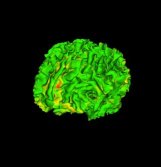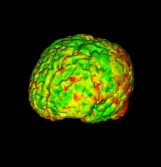Difference between revisions of "2009 Winter Project Week:LocalCorticalThicknessPipeline"
From NAMIC Wiki
| Line 10: | Line 10: | ||
===Key Investigators=== | ===Key Investigators=== | ||
| − | * UNC: Clement Vachet, Martin Styner, Heather Cody Hazlett, Marc Niethammer | + | * UNC: Clement Vachet, Martin Styner, Heather Cody Hazlett, Marc Niethammer, Ipek Oguz |
* GE: Jim Miller | * GE: Jim Miller | ||
| Line 30: | Line 30: | ||
<h1>Approach, Plan</h1> | <h1>Approach, Plan</h1> | ||
| − | Our plan for the project week is to | + | Our plan for the project week is to improve the pipeline and focus on the following steps: |
| + | *Mesh inflation with mesh correction | ||
| + | *Inflated mesh correspondence using particle systems | ||
| + | |||
| + | We will perform the analysis on a small dataset. | ||
| + | |||
</div> | </div> | ||
Revision as of 21:56, 12 December 2008
Home < 2009 Winter Project Week:LocalCorticalThicknessPipeline Return to Project Week Main Page |
Key Investigators
- UNC: Clement Vachet, Martin Styner, Heather Cody Hazlett, Marc Niethammer, Ipek Oguz
- GE: Jim Miller
Objective
We are developing an end-to-end application within Slicer3 allowing individual and group analysis of local cortical thickness.
Such a workflow applied to the young brain (2-4 years old) is our goal in order to start a longitudinal study of early brain development in autism (UNC DBP).
See our Roadmap for more details.
Approach, Plan
Our plan for the project week is to improve the pipeline and focus on the following steps:
- Mesh inflation with mesh correction
- Inflated mesh correspondence using particle systems
We will perform the analysis on a small dataset.
Progress

